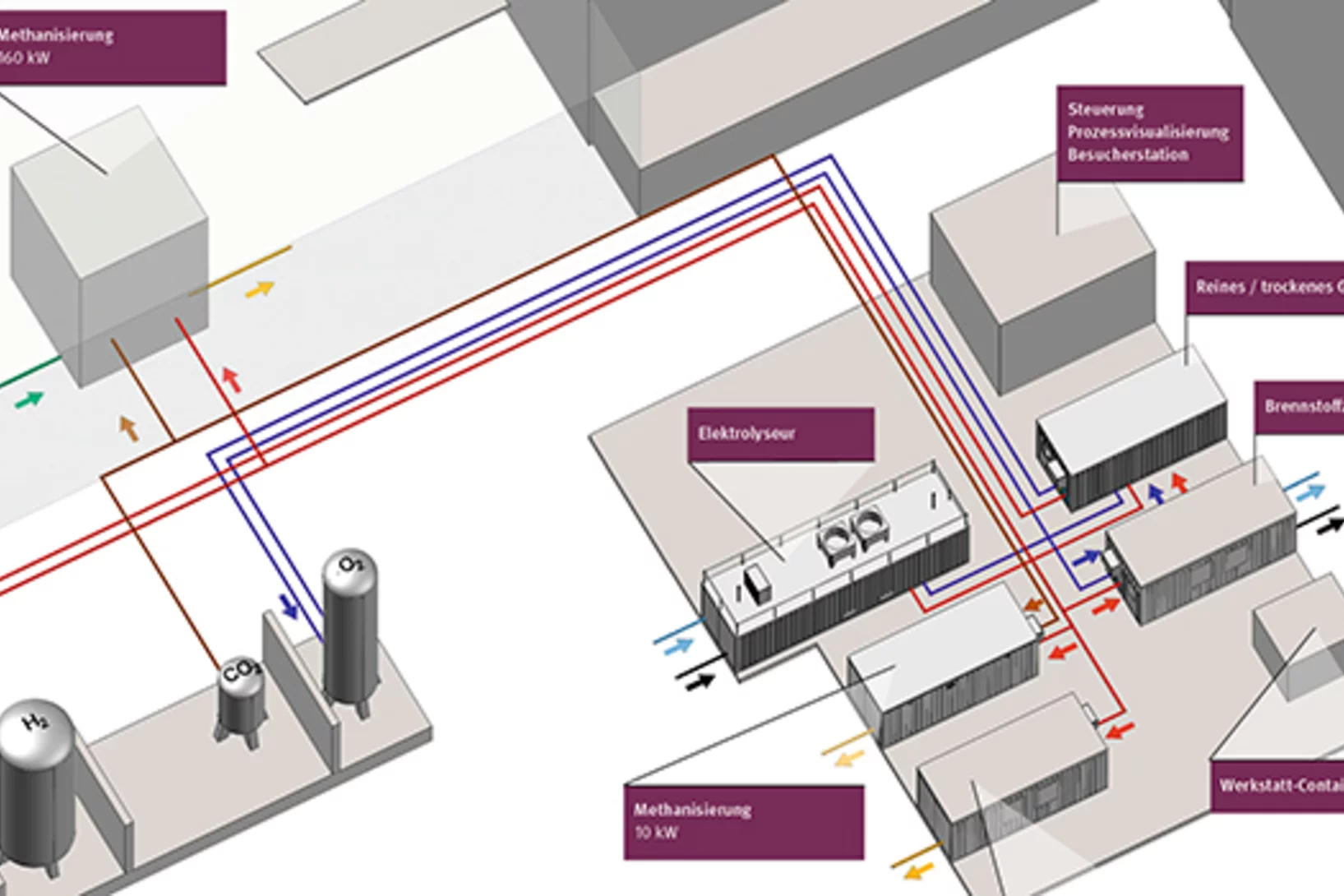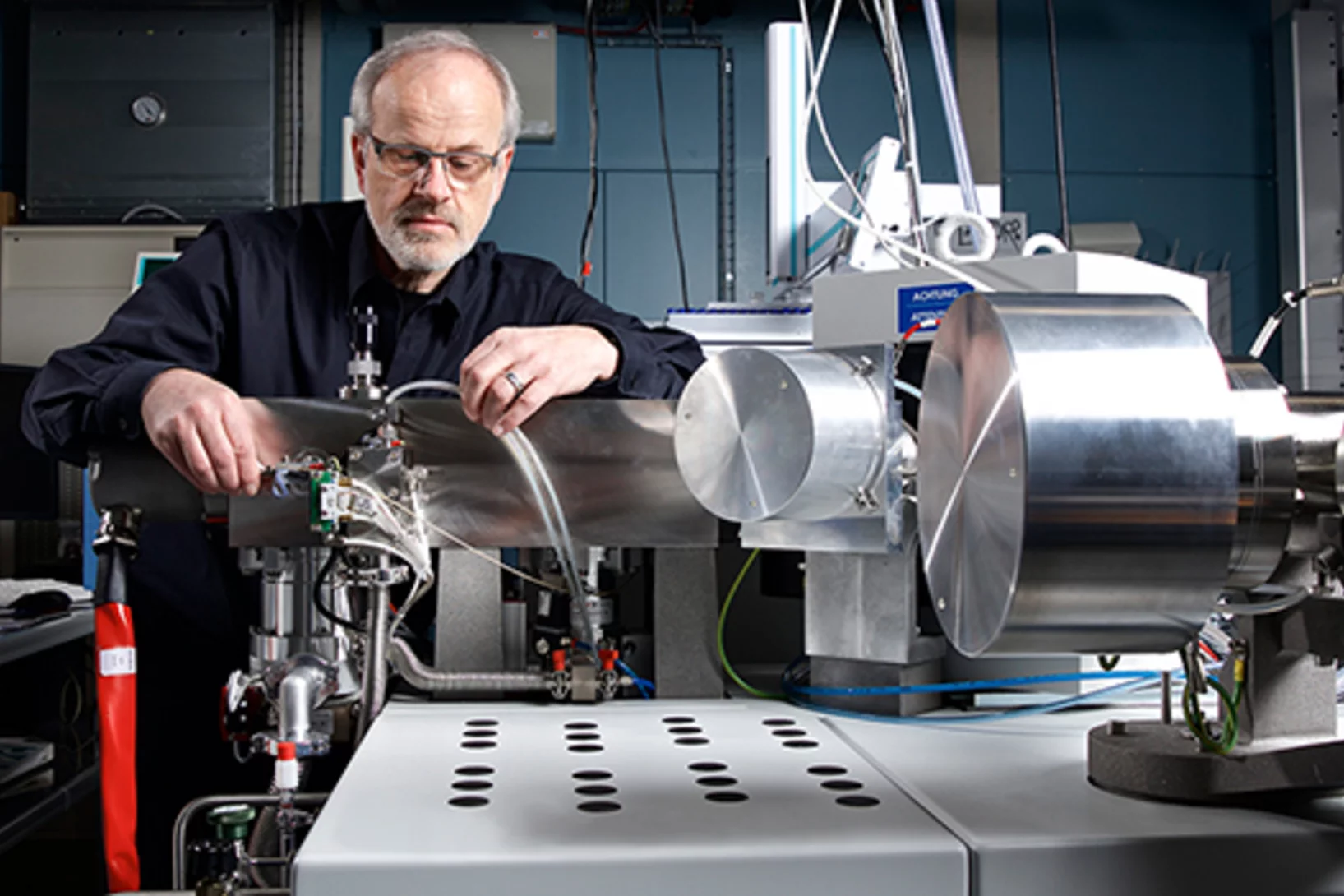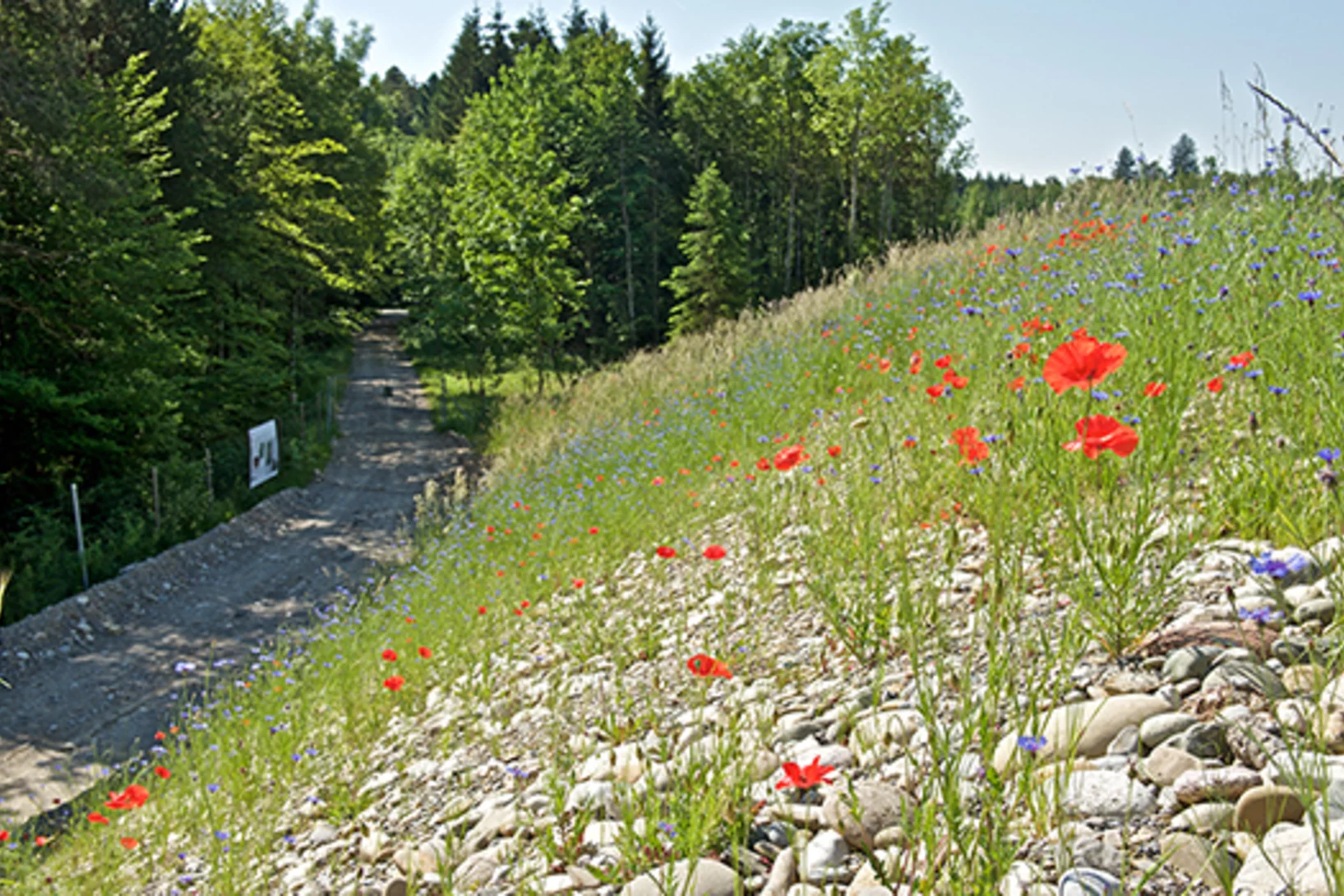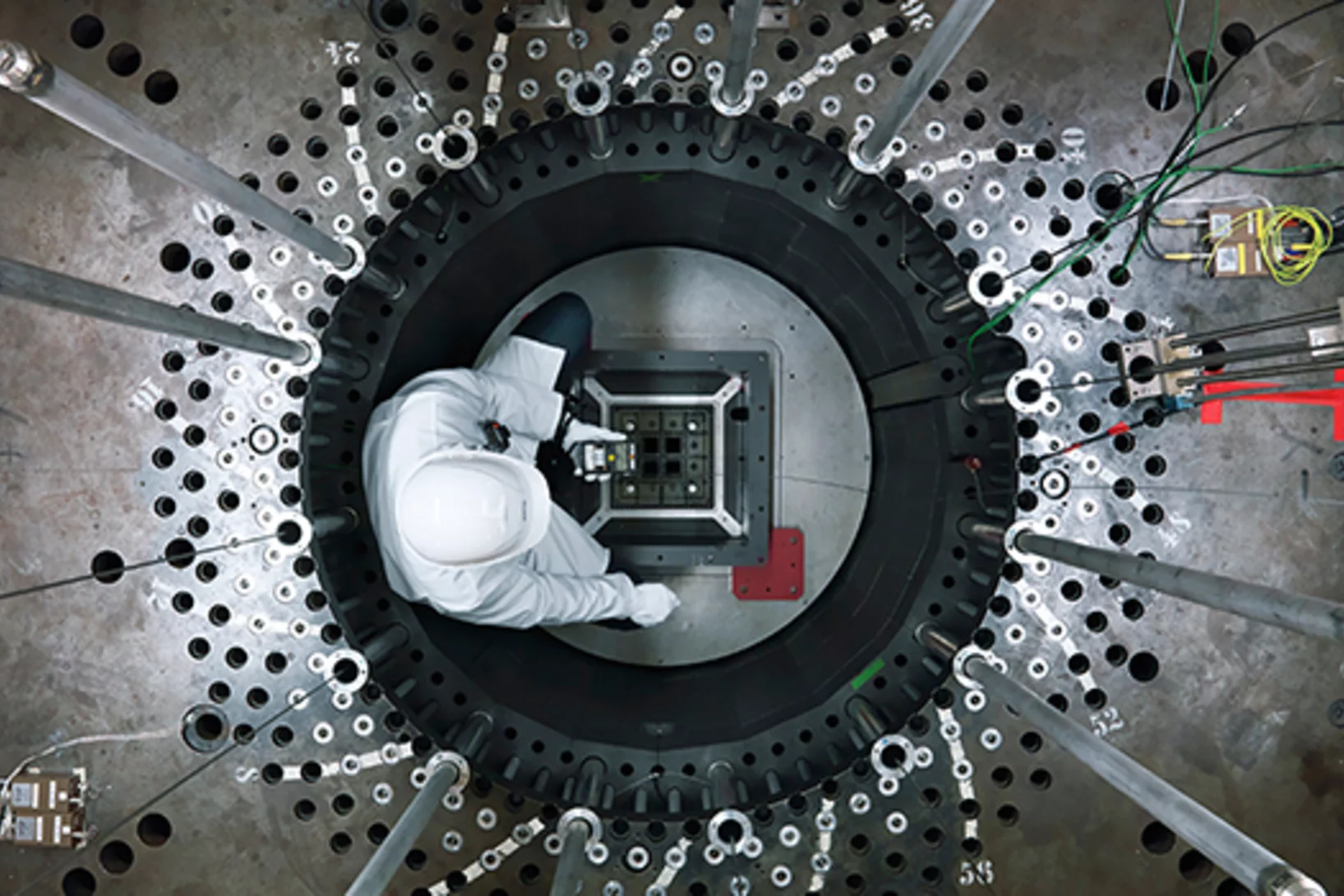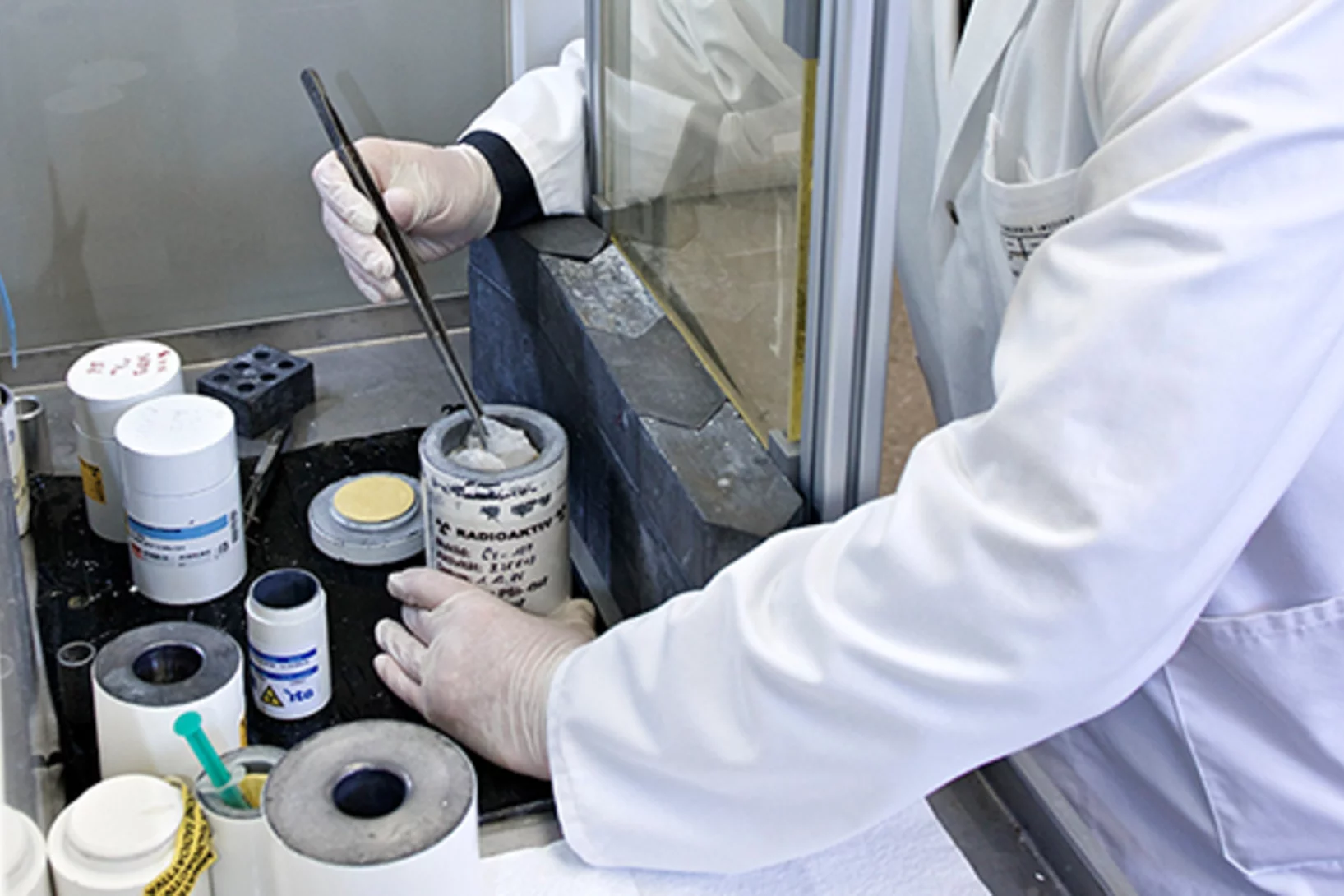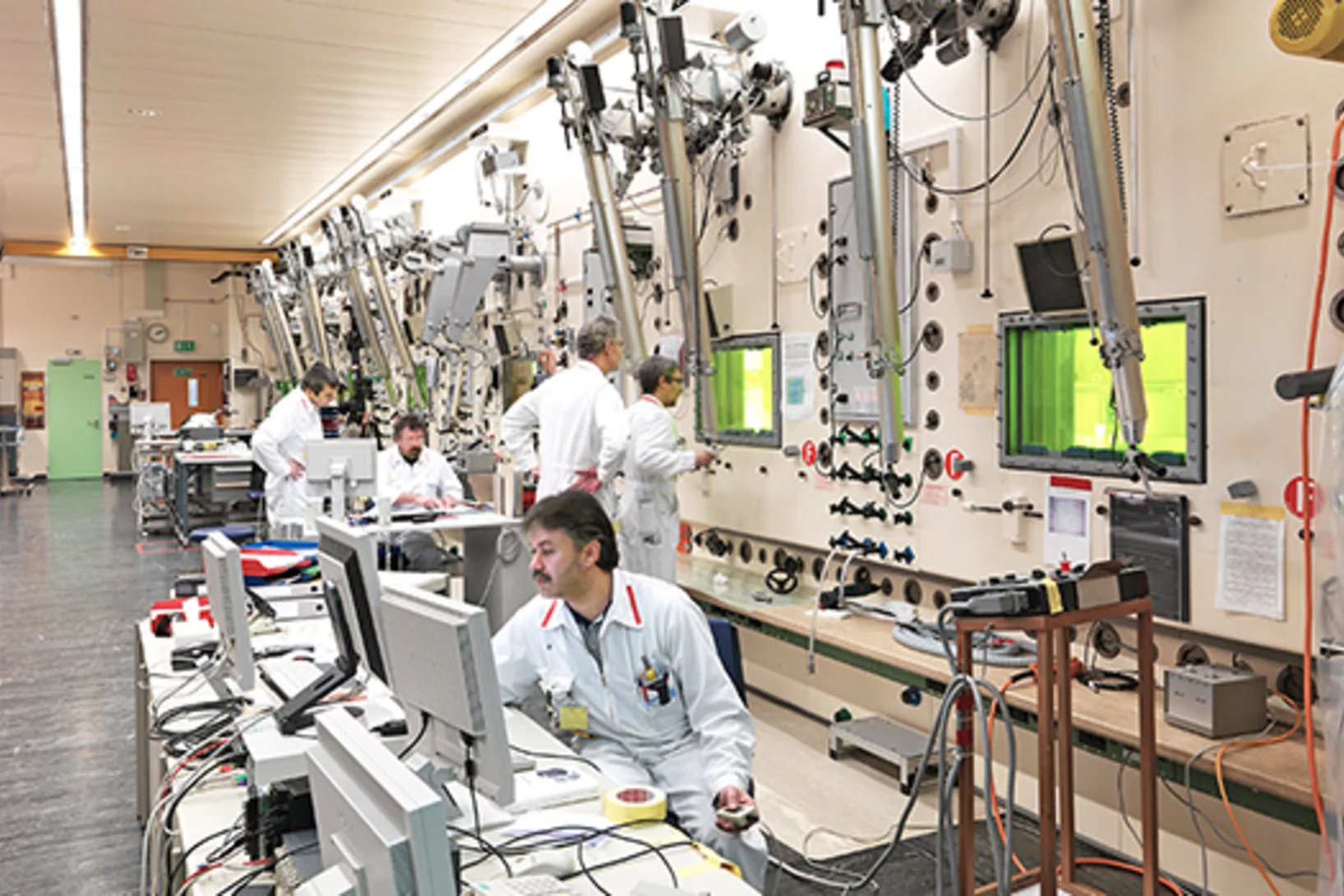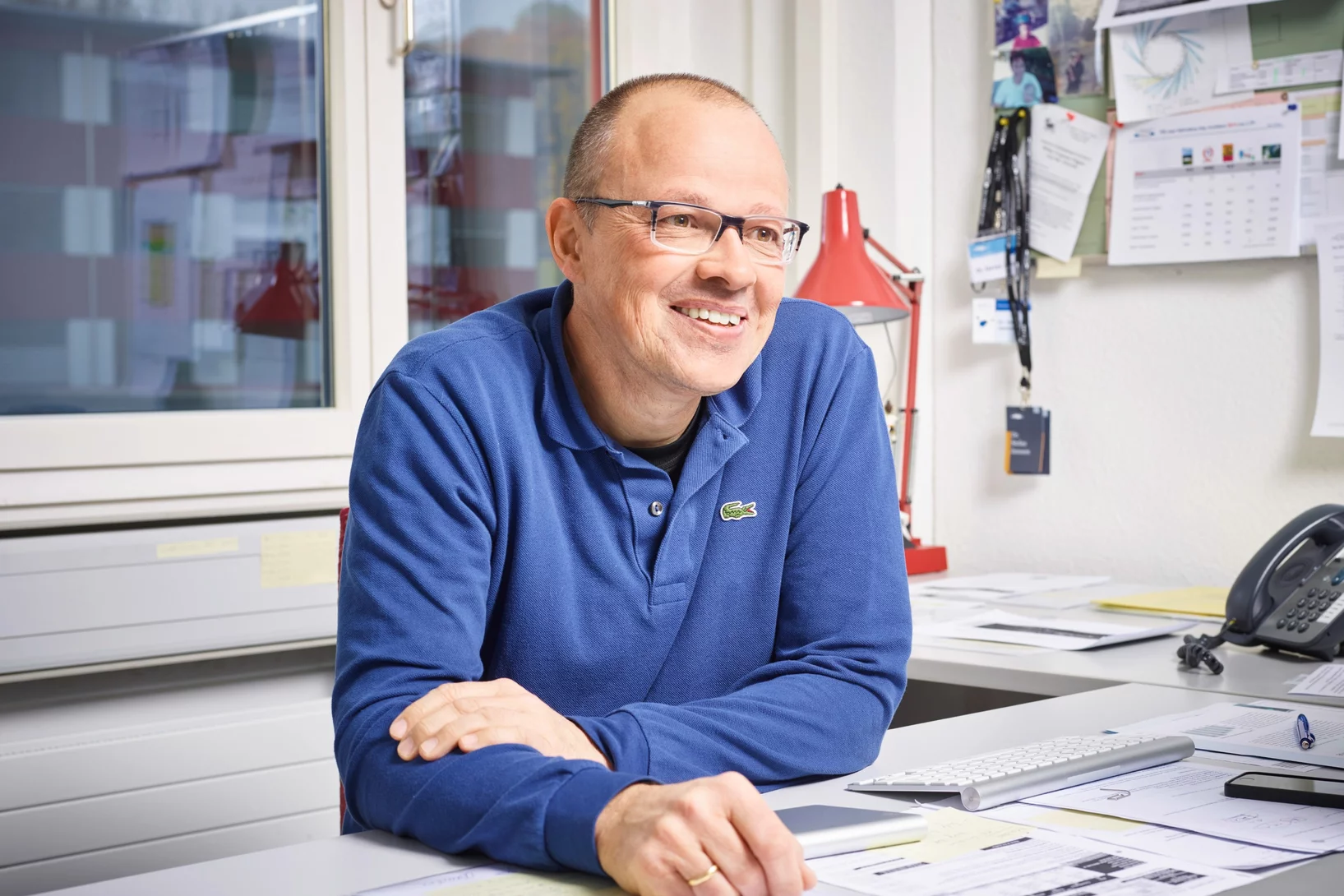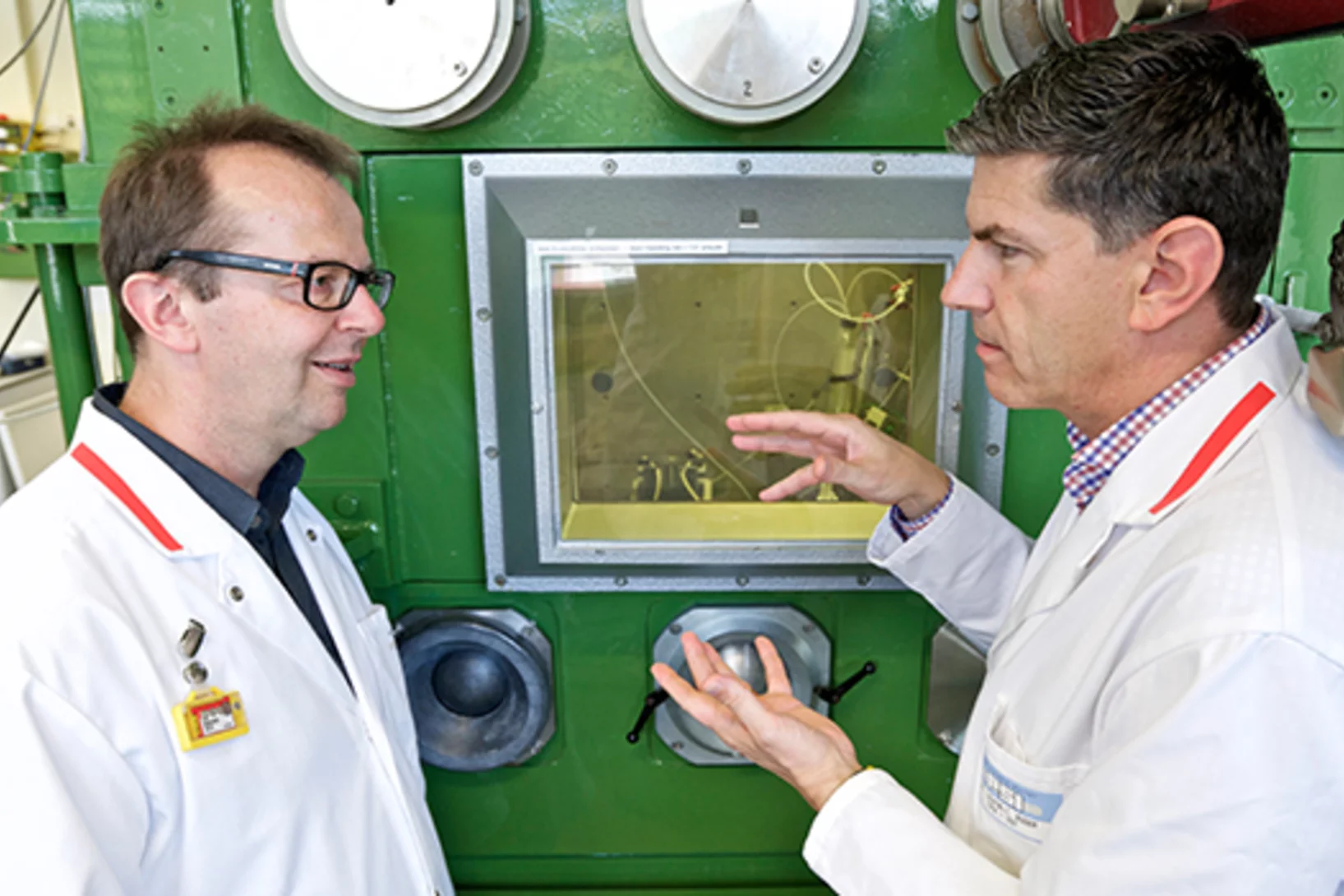PSI Stories
Structure of the ESI Platform
The road to a sustainable energy future leads through the integration of new renewable energy sources, from the sun, the wind, or biomass. Using the Energy System Integration or ESI Platform, research and industry can test promising approaches in all their complex connections and interrelations.
Trees Trade Carbon Among Each Other
Forest trees use carbon not only for themselves; they also trade large quantities of it with their neighbours. The extensive carbon trade among trees – even among different species – is conducted via symbiotic fungi in the soil.
Hitting cancer from the inside
Researchers at the Paul Scherrer Institute PSI are now investigating a new method to channel radioactive substances directly into the nucleus of a cancer cell. Through this approach, the radiation source remains inside the cell and works in a more targeted way, because it gets closer to the cell's genetic information.
Medicines made to order with pinpoint precision
At PSI, scientists are developing new medicines against cancer. These contain radioactive substances that can be injected into the patients and thus make their way to the tumour. There, in direct contact, their radiation should destroy the cancer cells. Before such a radioactive medicine can be tested on patients in the first clinical trials, however, its safety must be guaranteed to ensure that the patient will not be harmed. Therefore every agent is produced at the PSI under sterile conditions and tested – separately for each patient, and only on the doctor's order.
Cooperation with nature
With SwissFEL, a new landscape takes shapeBarely completed, the building housing the X-ray free-electron laser SwissFEL has disappeared again beneath a mound of earth. Since then, planting and landscaping have been under way on and around this major research facility of the Paul Scherrer Institute PSI. Its special location, in a forest, demands that SwissFEL be integrated in an environmentally appropriate way. So the facility is, from the outside, nearly invisible. And rare animals and plants have gained new living space.
Decommissioning of the research reactor Proteus
Start of the public examination period for decommissioning of the nuclear facility Proteus at the Paul Scherrer Institute PSIThe nuclear research facility Proteus is a so-called zero-power reactor. In service, the thermal output of the reactor was limited to a maximum of 1 kW. That means this is an experimental reactor that was run at a power level so low that it did not require cooling. Proteus went into service in 1968. The PSI would like to decommission the facility. The decommissioning project is now being publicly announced in the legally prescribed, official publications.
Developing a new drug against thyroid cancer
Researchers at the Paul Scherrer Institute PSI have developed a drug to trace and treat a particularly malignant strain of thyroid cancer more effectively. One advantage of the new drug is that it can be used to treat a strain of thyroid cancer where the established treatment is ineffective. The researchers at PSI have developed the new drug to such an extent that an initial study conducted on cancer patients at the University Hospital Basel can now get underway.
The hotlab research facility
Start of the public examination period for renewed authorization to operate the research facility hotlab at the Paul Scherrer Institute PSIThe hotlab at the Paul Scherrer Institute PSI is a facility, unique in Switzerland, where researchers study highly radioactive materials in specially shielded chambers called hot cells. It serves the needs of applied materials research on highly radioactive samples from core structural components and fuel rods from nuclear power plants, research reactors, and the PSI radiation facilities. Through its operation of the hotlab, the Paul Scherrer Institute also contributes to the safety of the nuclear power plants in Switzerland. Around thirty staff members attend to the hotlab's safety technology and analysis infrastructure.
At the interface
Interview with Stefan Janssen, Head of the User Office
Stefan Janssen is Head of the User Office at Paul Scherrer Institute PSI. In an interview, he explains why the PSI’s large research facilities are popular with researchers coming from other institutions, how he handles the many applications and how he supports users who come here to conduct experiments.
Targeting cancer
There are tumours where nothing seems to help: not chemotherapy, not external radiation therapy, not an operation. Often, they have already metastasised and can no longer be destroyed using conventional methods. The only option left here is internal radiotherapy with targeted radioactive drugs that strike directly at the heart of the disease. In order to make this possible, twenty specialists have been conducting research at the Centre for Radiopharmaceutical Sciences at the Paul Scherrer Institute PSI, a joint facility of PSI, ETH Zurich and the University Hospital Zurich.

